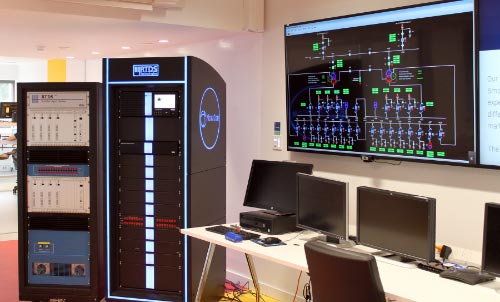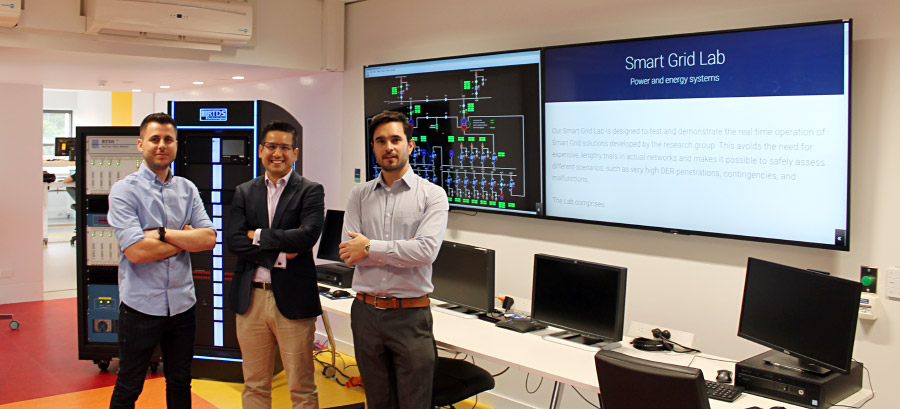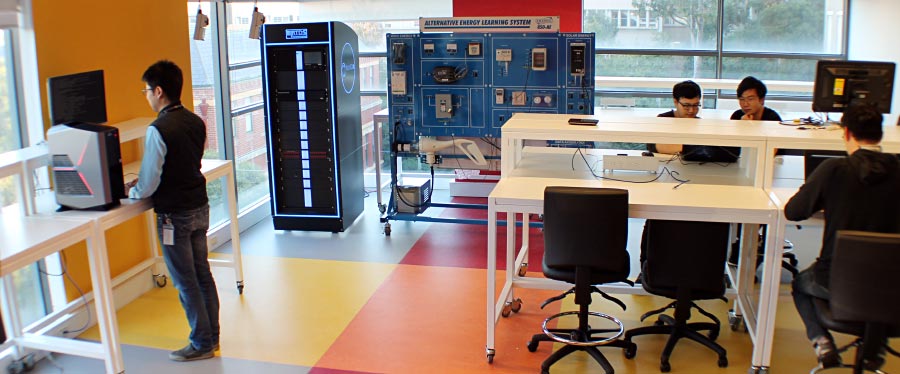Our Smart Grid Lab is designed to test and demonstrate the real-time operation of Smart Grid solutions developed by the research group. This avoids the need for expensive, lengthy trials in actual networks and makes it possible to safely assess different scenarios, such as very high DER penetrations, contingencies, and malfunctions.
Take a virtual 3D tour of our Smart Grid Lab!
The Lab comprises:
Real-Time Digital Simulators (RTDS)

The RTDS is essentially a supercomputer that calculates power flows in a fraction of a second, realistically mimicking the real-time behaviour of electricity networks. It has analogue and digital I/O that allow exchanging data (measurement and control settings) with other elements or platforms, for instance, a PLC, a relay or a SCADA system.
Our RTDS is comprised of two cubicles.
One cubicle has two racks, each equipped with four PB5 processor cards, having a combined capability to model up to 120 three-phase buses in Electromagnetic Transient (EMT) simulations mode at 50us time-step and over 330 three-phase buses in distribution mode at 150us time-step. Each rack is also equipped with a GTNETx2 SCADA interface card, which supports popular industry protocols (such as DNP3, IEC 61850).
The other cubicle is a RTDS Novacor with two licensed simulation cores. It is capable of modelling up to 130 three-phase buses in EMT simulations mode at 50us time-step.
Control room-style demonstration room
This room is designed for live demonstrations of Smart Grid schemes. With two large monitors and dedicated PCs, researchers and students can create visual interfaces using SCADA platforms and show how Smart Grids schemes work in real-time.

High-performance computing units
Smart Grid research can involve large volumes of simulations. We exploit parallel processing techniques to speed up our studies using two dedicated desktop PCs, each equipped with Intel Core i7 8700K (6 cores overclocked at 4.8GHz) and 64GB DDR4 RAM.
